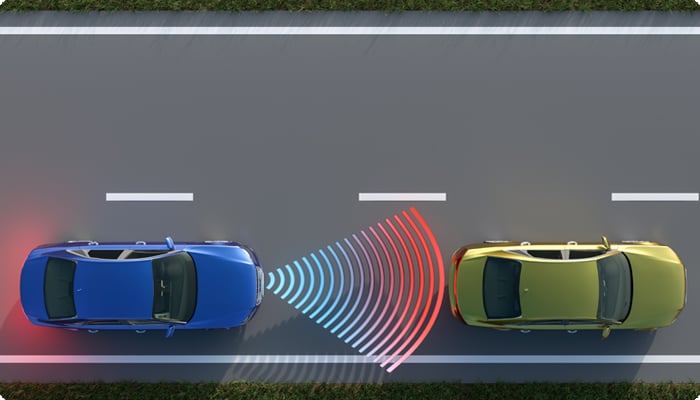
By
Rob Boyle
October 10, 2024
Updated
October 10, 2024

How can I practice safe driving?
Driving safely should always be our top concern. We're more distracted than ever, so it's crucial to know the basics of safe driving and practice them every time you're on the road.
For most people, driving is a necessity. You go to work, run errands, and take the kids to school, but every time you do, you are taking a risk. Millions of car accidents occur every year, of which tens of thousands prove fatal. Even safe drivers can become victims in accidents. That’s why defensive driving is so important because you could be taking precautions to save your own life and the lives of others.
Driving is a task that requires constant attention as the driver is responsible for the safety of their passengers. A careless and reckless driver will endanger the safety of their passengers while a careful and attentive driver increases the chances that their passengers reach the destination.
Always remember S.A.F.E.R. Driving
S - Space
A - Attitude
F - Foresight
E - Eyesight
R - Responsibility
S - Space
- Use the two second rule on heavily traveled roads to maintain adequate spacing with the car in front of you.
- Slow down. Speeding gives you less time to react and increases the severity of an accident. Follow posted speed limits. Most drivers know that speeding is a major cause of accidents, but driving too slowly can be dangerous, too. When in doubt, drive at speeds that most other vehicles are going.

A - Attitude
- Keep your cool in traffic!
- Be patient and courteous to other drivers.
- Do not take other drivers’ actions personally.
- Do not tailgate other cars.
F - Foresight
Make yourself visible. Many accidents occur because drivers didn’t see the other car. There are a few simple ways to make your presence known, making the road safer for everyone. They include:
- Turn signals: Use your turn signals to let other drivers know where you’re going. By using your blinkers, other drivers will be able to anticipate your actions and slow down safely.
- Headlights: Turn on your headlights at dusk or anytime it is raining. This is more for other drivers to see you than for you to see the road.
- Brake lights: Operational brake lights are a safety must. They warn cars behind you that you’re slowing down, signaling them to reduce speed, too.
- Avoid blind spots: Don’t linger in areas where the driver in front of you can’t see you. Many people will only check their mirrors before making a lane change. If you’re lurking slightly behind and a lane away from another vehicle, assume that the driver of that car can’t see you. Either safely speed up or slow down to avoid this scenario, which often results in an accident. This is an important defensive driving technique.
E - Eyesight
Keep your eyes on the road, stay focused. Ensure that you are attentive and careful at all times.
- Driving requires your full attention. Do not attempt to multi-task while driving. Avoid distractions, such as adjusting the radio or other controls, eating or drinking, and talking or texting on the phone.
- Do not use your mobile phone or any other electronic device while driving. Reaction time is delayed for a driver talking on a cell phone as much as it is for a driver who is legally drunk.
- Secure cargo that may move around while the vehicle is in motion. Do not attempt to retrieve items that fall to the floor. Have any items needed within easy reach, such as toll fees, toll cards, and garage passes.
R - Responsibility
- Expect other drivers to make mistakes and be prepared to react. If a mistake is made, you will be ready to defend yourself.
- Be aware of what other drivers around you are doing and expect the unexpected.
- Assume other motorists will do something unsafe and always be prepared to avoid it.
- Always wear your seat belt and drive sober and drug-free.
How can I avoid a car accident?
One of the most devastating collisions can be a simple hit from behind. Here are some ways to help prevent being rear-ended in traffic:
- Look further up the road to spot stopping traffic long before the vehicle in front of you slams on its brakes.
- Check your mirrors more often. Drivers should be checking their mirrors every five to eight seconds and then again when slowing or stopping. When coming to a stop at a traffic light or stop sign, always look in the rear-view mirror to be sure vehicles behind you are also stopping.
- As you slow to a stop, identify an escape route. Think of the shoulder, sidewalk, curb lane, left turn lane, or any other safe route where you can get out of the way of a charging vehicle.
- When you stop, leave two or three vehicle lengths between you and the vehicle in front of you. If you pull up tight behind the vehicle in front, you have locked yourself into a potential danger zone, eliminating any options of escape.
- While stopped, visualize what you can do if the vehicle behind you does not show signs of stopping in time. Go over in your mind that you need to get off the brake and steer where you want to go. Most drivers will simply push on their brake harder when being struck from behind in an instinctual reaction to a crash. It is unfortunately the wrong response. Be prepared to accelerate and steer to where you want to go.
Since you can’t predict what other drivers will do, using these tips to keep a “space cushion” around your vehicle will give you more time and more options to react to unexpected situations.
